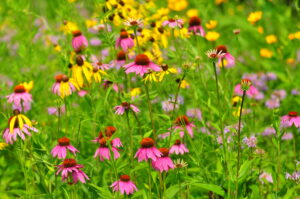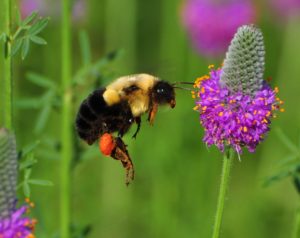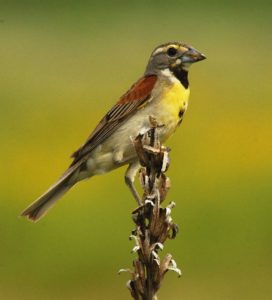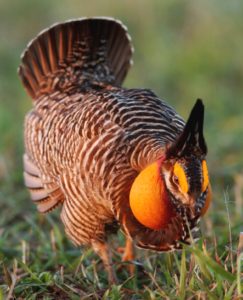Photography courtesy of Lowell Washburn, all rights reserved.
“There was nothing to see but prairie, green stretches of grassland rolling quietly outward ‘till lost in the haze that trembled on the horizon.” –
Those words are excerpted from the 1870’s logbook of Norwegian immigrant, Laurence Larson upon his arrival in Winnebago County, Iowa.
For contemporary Iowans, it would be hard – if not impossible — to imagine such a scene. An undisturbed, and seemingly endless natural paradise bursting with summer color, stretching as far as the eye can see. But such was the prairie landscape that greeted Larson and other European immigrants upon their arrival in pre-settlement Iowa.
As wondrously complex as it is beautiful, Iowa’s tall grass prairies contain more than 400 species of flowering plants and grasses. Growing to heights that tickled the leggings of horseback explorers, prairie grasslands were Iowa’s most dominant land feature, encompassing around 80 percent [30 million acres] of the state when government land surveys were conducted during the 1850s.

Iowa’s prairie ecosystem was further enriched by the presence of an additional 4 million acres of shallow wetlands. Entering a wonderland that was as productive as it was beautiful, pioneering homesteaders encountered an astounding variety of wildlife that included nesting whooping cranes, wild swans, bison, elk, prairie wolves and unfathomable numbers of migratory waterfowl and native prairie chickens.
Pioneers were quick to capitalize on Iowa’s agricultural potential, rapidly converting prairies into a patchwork of family farmsteads – most less than 100 acres in size. Civilization rapidly advanced as more and more immigrants continued to arrive.
Today, only one tenth of 1 percent of Iowa’s native prairies remain. Iowa’s once dominate landscape has all but vanished. The good news is that surviving prairie remnants, though barely a glimmer of their former glory, have successfully retained the ability to spark our imaginations and provide a glimpse into the rich natural heritage of Iowa’s past. Equally noteworthy, is the fact that government and private conservation organizations as well as a growing number of private landowners are working to replicate at least a portion of this vanished ecosystem. Although free roaming herds of elk and bison will remain a thing of the past, reestablished [replica] prairies lend much needed color and a sense of biological diversity to modern-day landscapes. Although species inventories remain incomplete, replicated prairies do support a wide variety of native forbs which in turn provide fuel and cover for everything from migrating monarch butterflies to little known, rare and endangered pollinators. Meanwhile, a healthy interspersion of grasses such as Indian grass, big and little bluestem, switchgrass, and others offer critical habitat for a host of native bird species including dickcissel, bobolink, mallard, and meadowlark. Wildlife diversity is further enhanced by programs aimed at restoring vanished species. Greater prairie chickens are becoming reestablished in southern Iowa while families of wild trumpeter swans once again grace the skies above northern Iowa’s prairie wetlands.
Prairie remnants exist not only on public preserves but can also be found along quiet country roadsides and in the forgotten corners of pioneer cemeteries. Iowa’s prairies are currently in full bloom. There will never be a better time to catch a living glimpse of our colorful prairie heritage.




 Tom Cope
Tom Cope Sue Wilkinson
Sue Wilkinson Susan Judkins Josten
Susan Judkins Josten Rudi Roeslein
Rudi Roeslein Elyssa McFarland
Elyssa McFarland Mark Langgin
Mark Langgin Adam Janke
Adam Janke Joe Henry
Joe Henry Kristin Ashenbrenner
Kristin Ashenbrenner Joe Wilkinson
Joe Wilkinson Dr. Tammy Mildenstein
Dr. Tammy Mildenstein Sean McMahon
Sean McMahon